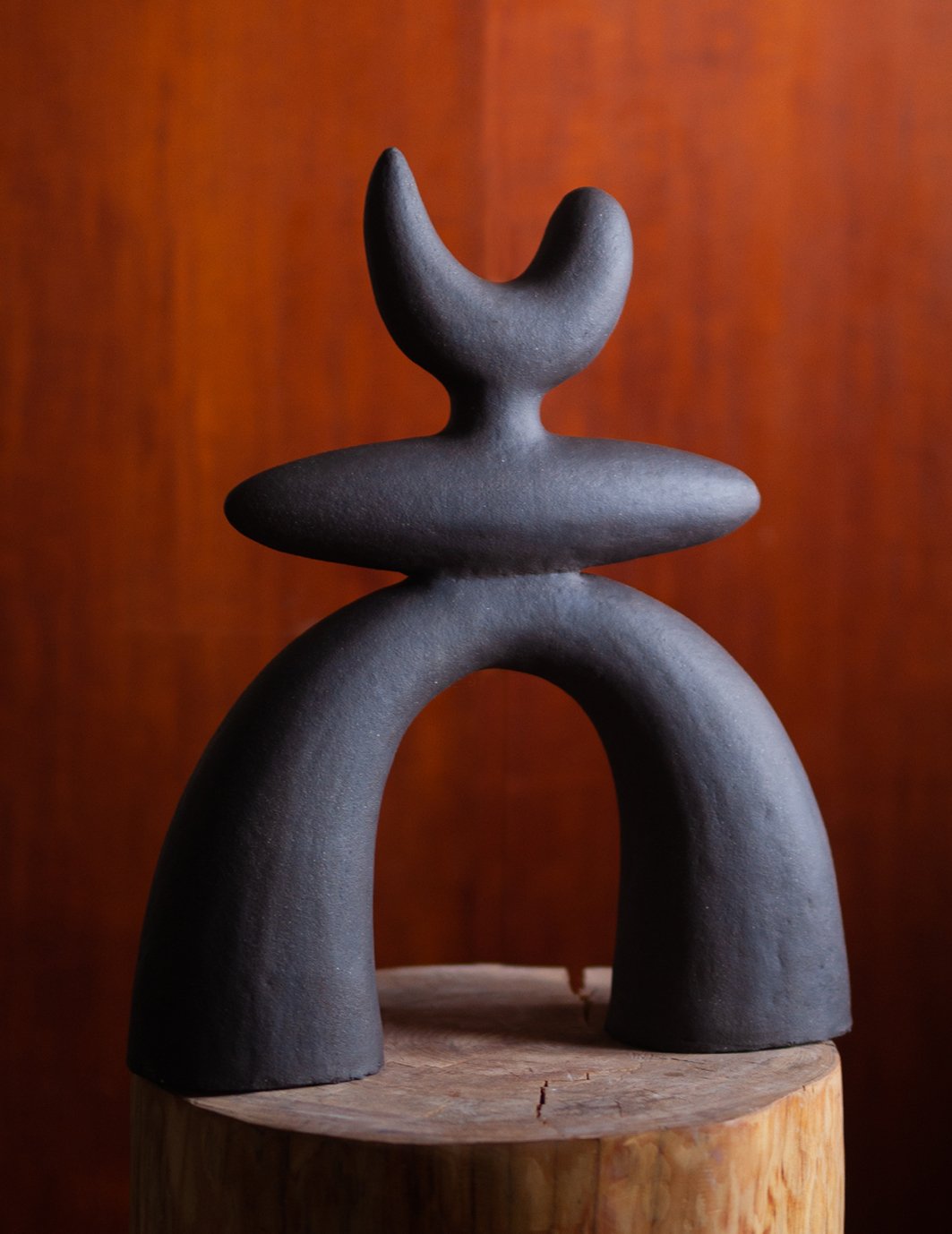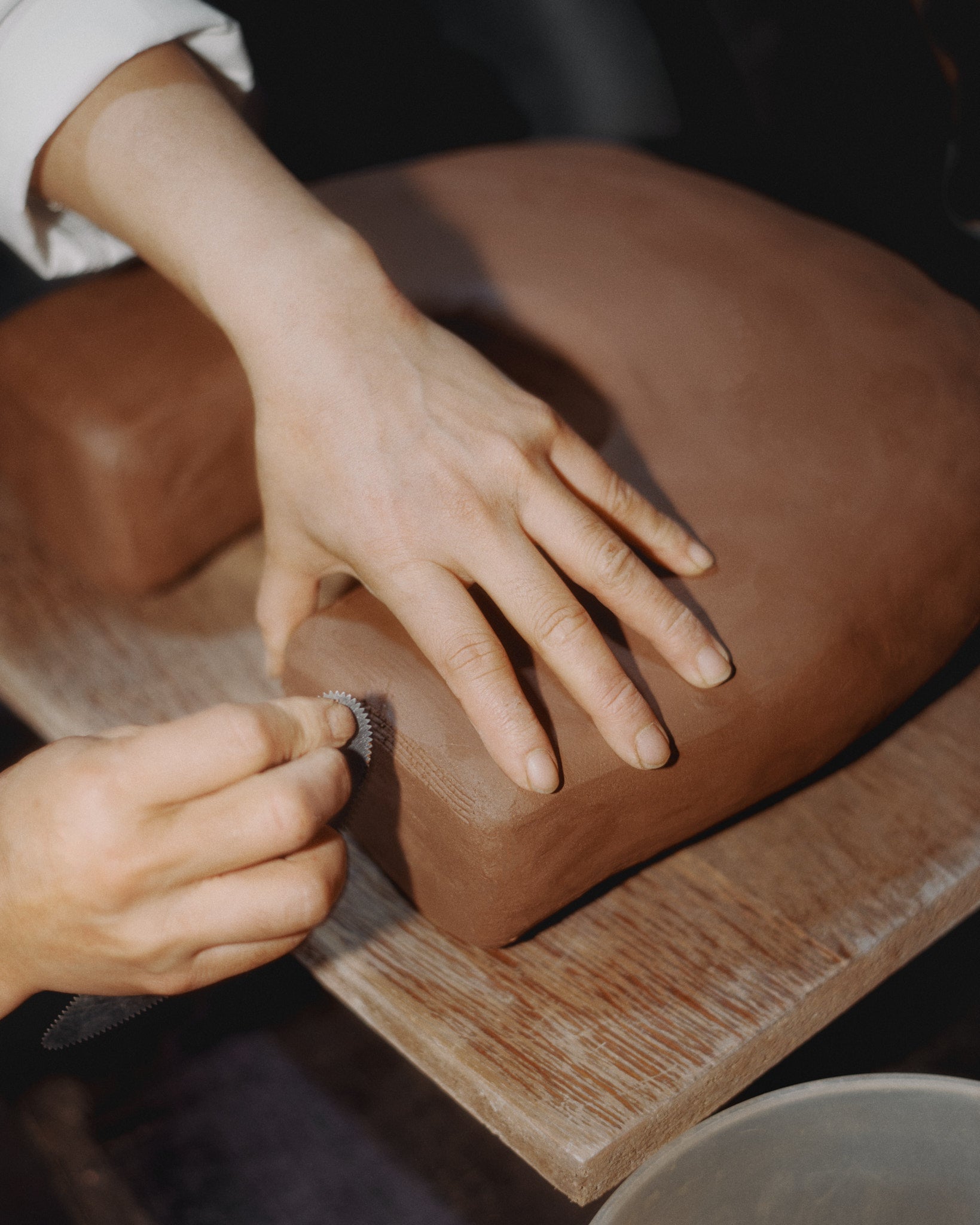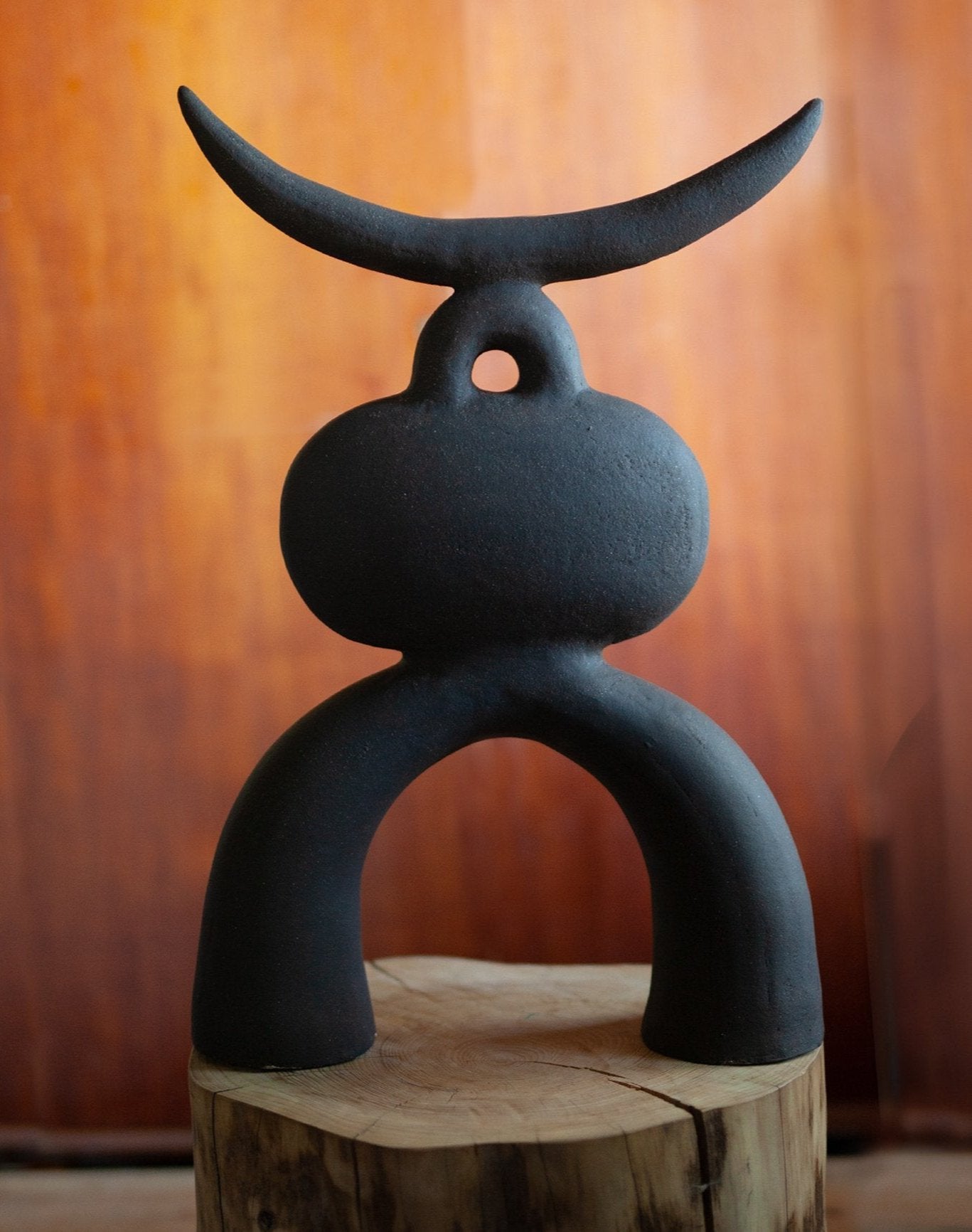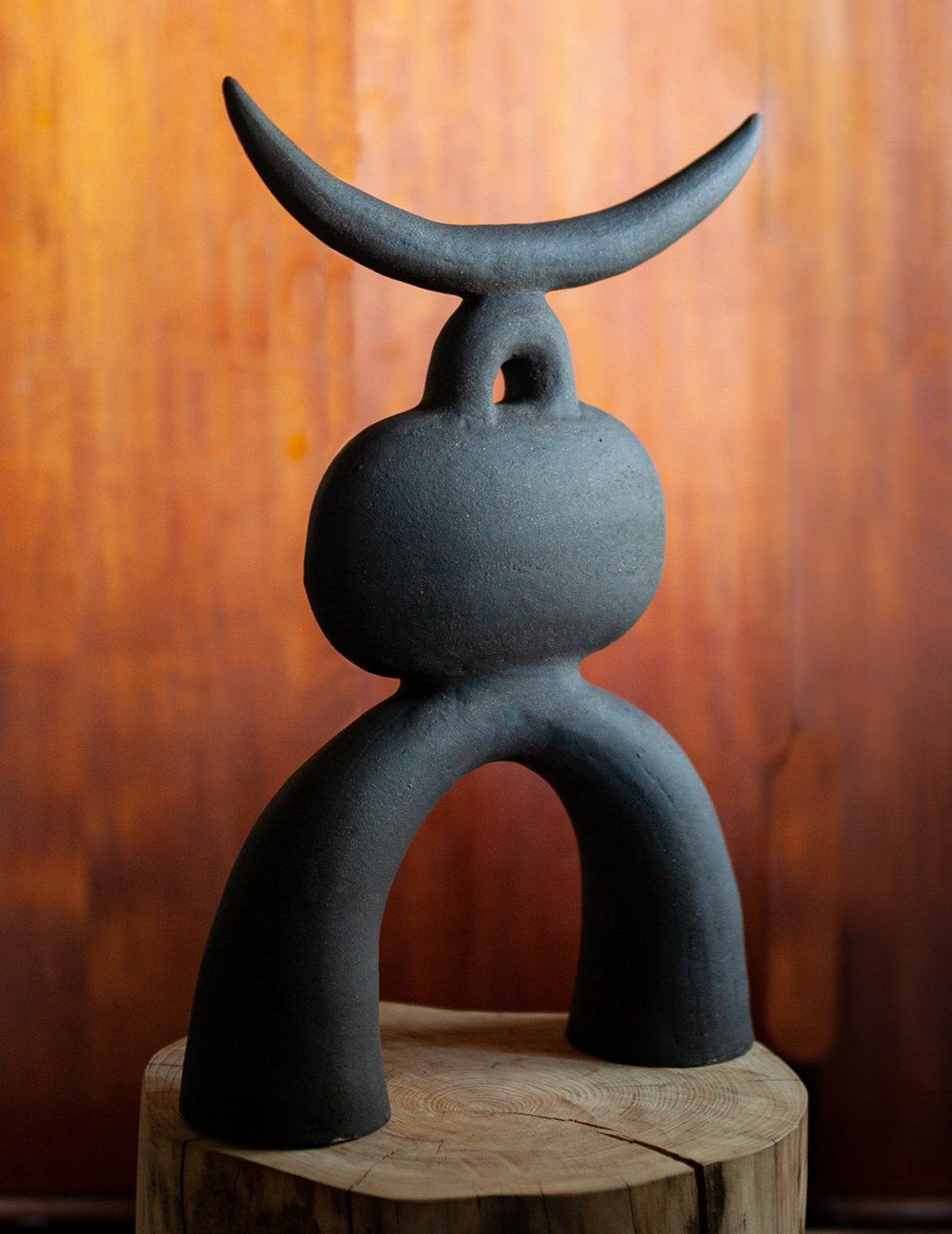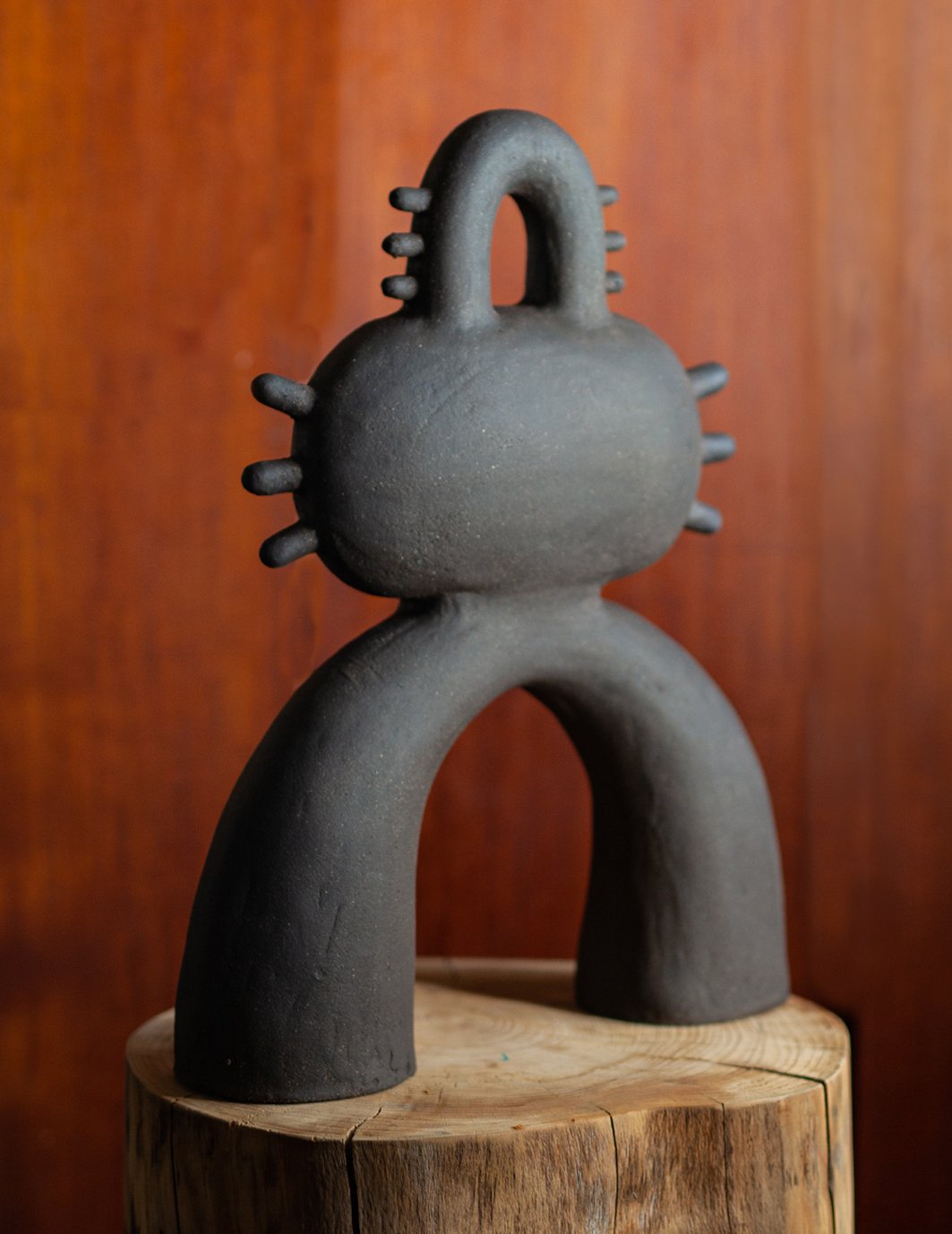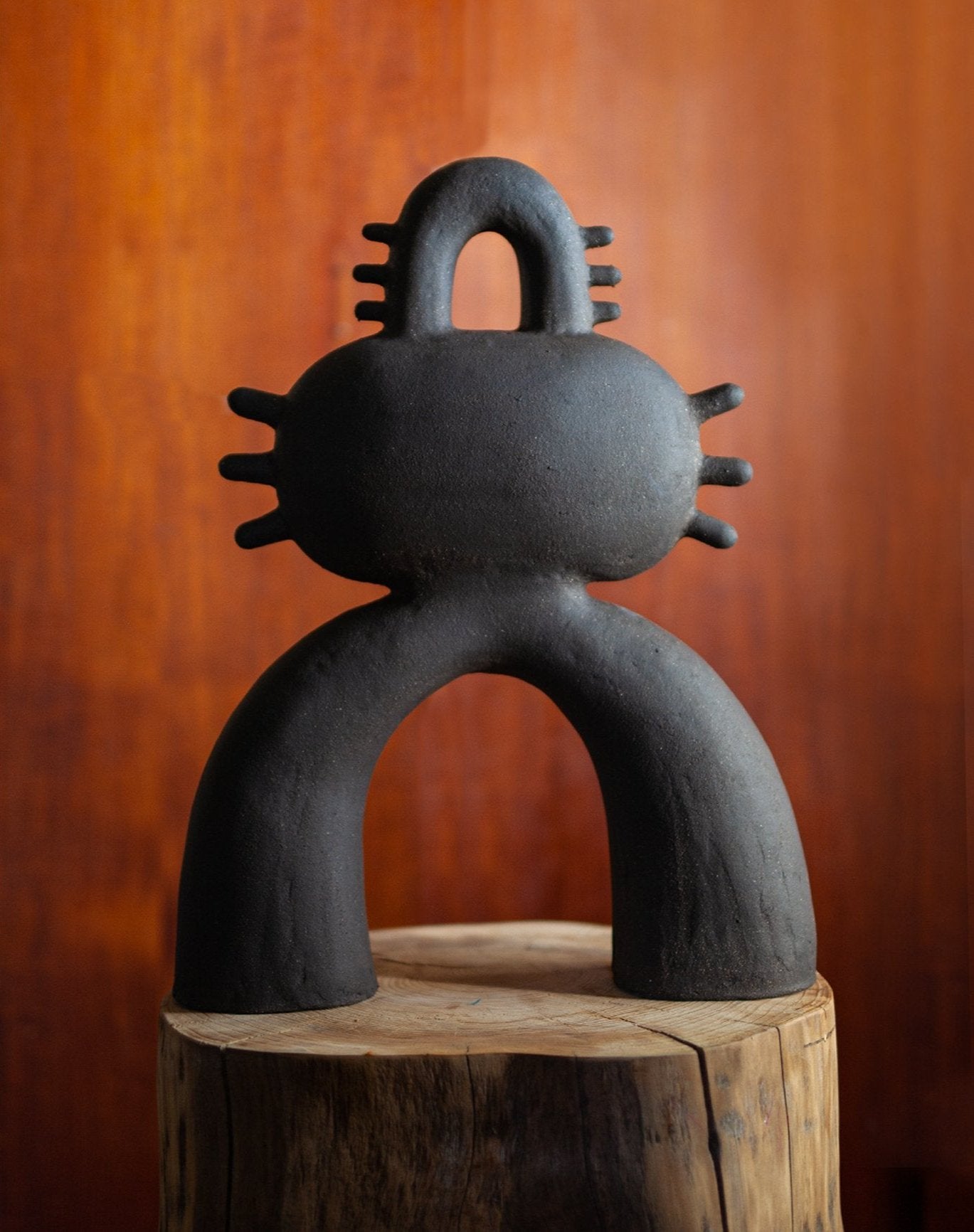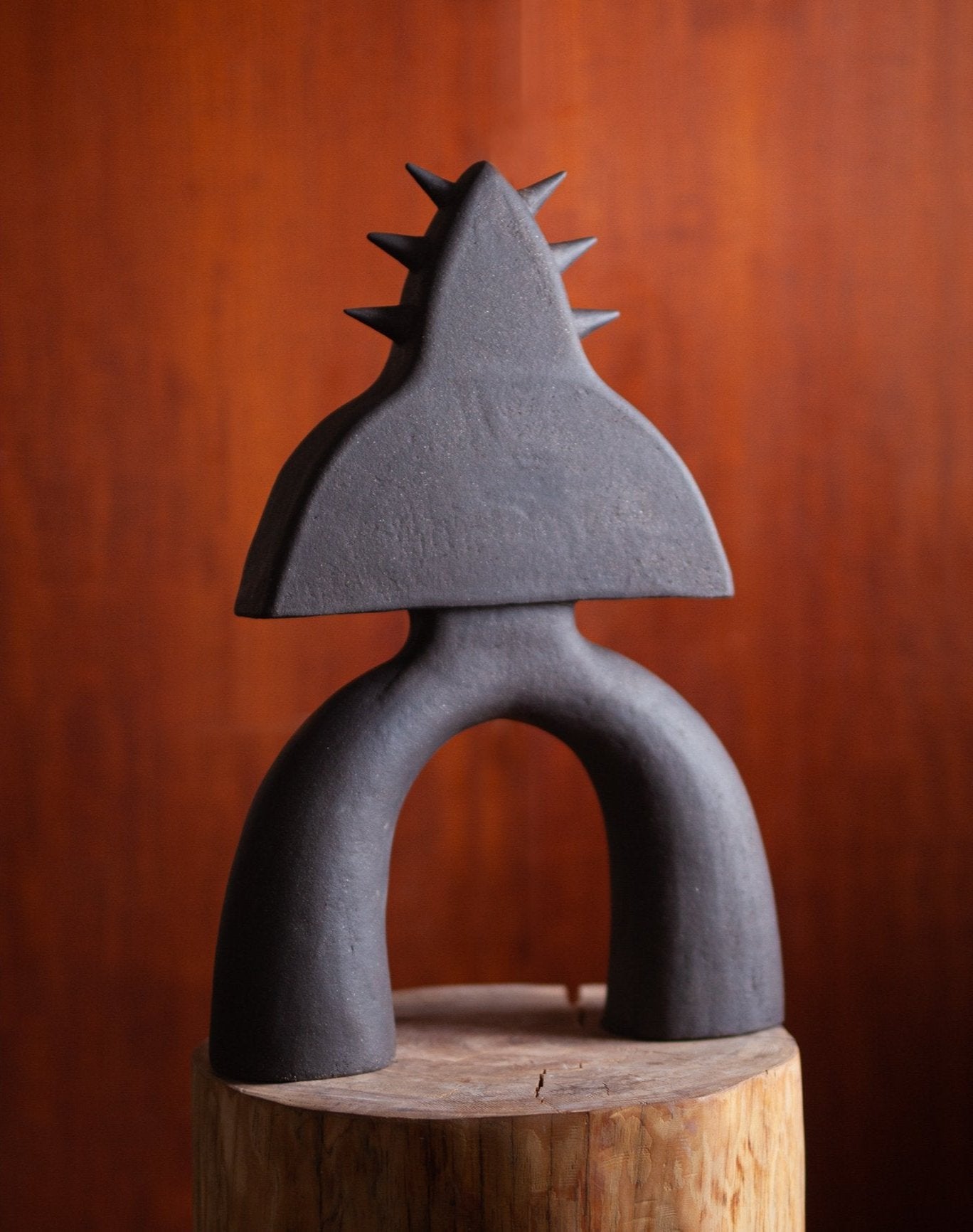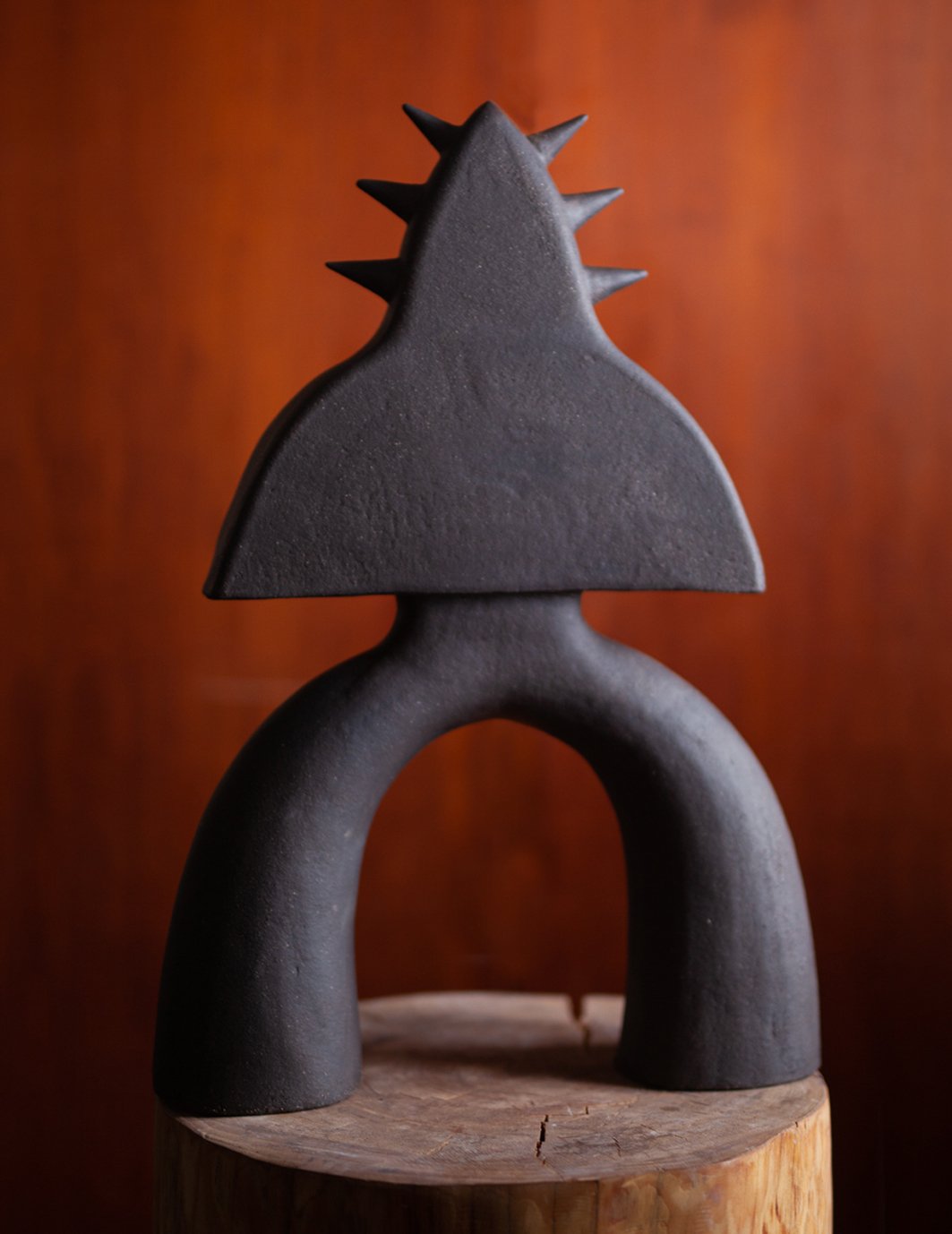The Stoneware Color Spectrum: From Earth Tones to Bold Statements
The language of color in stoneware
Stoneware is a conversation between earth and fire, but color is the part of the story that lingers. The right hue can make a room exhale. It can sharpen a silhouette, pull daylight deeper into a space, or anchor a collection with quiet authority. In this material story, we explore the stoneware color spectrum—how colored stoneware moves from calming earth tones to striking statements—and how two of our featured makers, Noe Kuremoto and Tania Whalen, distill color into feeling you can live with.
At Trove Gallery, we curate pieces that carry their makers’ touch into your home. Whether you gravitate toward subtle, mineral-rich neutrals or crave the tension of saturated glazes, the choices you make in stoneware glaze colors can transform mood and meaning. Consider this your guide to looking deeply: to the clay body, the finish, and the hue—then pairing the right piece with your interiors.
As you read, you’ll find links to individual artworks—works that capture distinct points along the palette. From the contemplative presence of Noe Kuremoto’s Haniwa and Dogu figures to the rhythmic, architectural vessels of Tania Whalen, color is not decoration; it is narrative. Explore our highlighted pieces throughout, and visit the makers’ collections to dive even deeper.
Earth tones: the quiet power of clay
Earth tones are the native tongue of stoneware. They come from the clay body’s iron content, from slips that emphasize texture, and from glazes that gently fuse with the underlying material. Think understated, elemental hues that play beautifully with timber, linen, and stone. In a home, these tones ground a space. They welcome natural light and reward close looking: the granular shift from charcoal to warm umber, or a satin-matte surface that softens architectural edges.
Within our collection, Noe Kuremoto’s Haniwa Warriors embody this grounded presence. These hand-sculpted figures feel at once ancient and unmistakably contemporary—sculptures that hold a room with serene stillness. Explore the series to find your tonal center. Pieces include the Haniwa Warrior 93 ($1,700.00), Haniwa Warrior 85 ($1,700.00), Haniwa Warrior 74 ($1,700.00), and Haniwa Warrior 92 ($1,700.00). Each stands as a portrait of restraint, where color and form are inseparable.
Continuing in the series, discover Haniwa Warrior 124 ($1,700.00), Haniwa Warrior 107 ($1,700.00), Haniwa Warrior 113 ($1,700.00), and Haniwa Warrior 126 ($1,700.00). Displayed alone, they invite contemplation; assembled together, they read like a tonal poem—proof that subtle differences in colored stoneware can feel profound when viewed across a series.
In the context of interior styling, earth-toned stoneware does more than “match” a palette; it deepens it. Place one of the Haniwa Warriors on a limewash mantle or in a bookcase niche and notice how the light clings to the surface. The hue anchors the vignette while the hand-built edges add a quiet liveliness. These are the pieces that don’t need to shout—they speak in a low, reassuring register that’s easy to live with day after day.
Saturated statements: when stoneware goes bold
While earth tones whisper, saturated colors can sing. In stoneware, bold color often arrives where glaze meets form: a strong hue that emphasizes the curve of a vessel or the posture of a figure. The interplay of glossy versus satin finishes changes how a color reads—gloss amplifies and reflects, while satin-matte diffuses and deepens. When you crave a focal point, rich stoneware glaze colors offer impact without sacrificing tactility.
Noe Kuremoto’s Dogu and Crane Wife figures show how a sculptural language can carry color beautifully. Each has a distinct presence: statuesque, poetic, and imbued with an arresting stillness that welcomes brighter or deeper tones. Explore the Dogu series—including Dogu Lady 91 ($1,105.00), Dogu Lady 93 ($1,105.00), and Dogu Lady 95 ($1,105.00)—to see how color can shift the emotional register of a form from meditative to luminous.
For collectors looking for sculptural gravitas with tonal nuance, consider Dogu Lady 74 ($1,236.00), Dogu Lady 19 ($1,247.00), and Dogu Lady 104 ($1,356.00). These works show how colored stoneware can be both expressive and elegantly restrained—especially when styled with textured textiles or under directional lighting that grazes the surface.
Kuremoto’s Crane Wife 9 ($1,356.00) and Crane Wife 14 ($1,356.00) offer a different kind of resonance—figures that feel lyrical, their forms amplifying the effect of color. Whether your space leans minimal or layered, a saturated figure paired with a soft backdrop distills the drama to its essence: form, hue, and shadow.
Color-forward stoneware doesn’t require a maximalist setting to succeed. One strong piece can transform a console table or create a conversation point near a window. The key is proportion and placement—let negative space do the framing so the hue can breathe.
Techniques that shape the spectrum
Behind every remarkable color in stoneware lies a sequence of choices. The clay body influences warmth and texture; slips can alter surface tooth and undertone; and glaze chemistry decides how light plays across the form. Understanding these choices helps collectors read a piece more deeply—and select the right work for a particular room.
Clay bodies and undertone: Iron-rich clays often skew warm, reinforcing earth tones even under translucent glazes. A lighter clay body can brighten a hue and sharpen edges, while a darker clay can mute high chroma, adding complexity. When you notice that a piece feels “rich” even in a neutral palette, it often reflects this interplay between body and glaze.
Surface finishes: Satin-matte glazes diffuse reflection, creating velvety color with gentle gradients across curves. Gloss glazes, by contrast, amplify saturation and crispness, catching highlights and sharpening silhouettes. Many of the stoneware glaze colors you’ll see in our collections are selected precisely for the way they articulate form—carrying color without obscuring the hand.
Layering and reduction: Some artists layer slips and glazes to achieve a sense of depth that reads like a shadow beneath the hue. Firing choices also matter. While each maker maintains a specific studio approach, the common thread is intentionality—every step is in service of how the eye will finally encounter the piece at home.
For collectors, the practical takeaway is simple: look at color not just head-on but around the curve. Walk past a piece and note how the hue shifts in motion. Consider where sunlight meets the form at different times of day. Colored stoneware rewards this kind of attention—what you love on first glance tends to reveal more with time.
Collectors’ spotlight: Noe Kuremoto and Tania Whalen
At Trove Gallery, we’re honored to present works by artists who treat stoneware as an expressive medium rather than a mere surface for color. In the hands of Noe Kuremoto, figure becomes vessel for feeling—each Haniwa, Dogu, and Crane Wife piece emanating a quiet strength. Color here is an accent to presence, a way to clarify posture and line.
Kuremoto’s Haniwa Warriors, including 93, 85, 74, 92, 124, 107, 113, and 126, feel like companions—guardians rendered with a sensitivity that makes room for stillness. The Dogu and Crane Wife figures show a more lyrical register, where proportion and curvature cue the eye to color in increasingly subtle ways. Explore the full Noe Kuremoto collection to see how each piece presents a slightly different tone and mood.
With Tania Whalen, the conversation turns architectural. Her vessels take rhythm as a principle—repetition, spacing, and contour guiding how light and color unfold across a surface. The Rhythm 1 Vessel ($1,625.00) and Rhythm 2 Vessel ($1,625.00) exemplify structural elegance. In each, color is asked to follow form, tracing the rise and fall of the silhouette—proof that stoneware glaze colors can be both precise and poetic.
Both makers understand that color is a material, not an afterthought. In their work, hue is there to hold space, to sharpen lines or soften them, and to connect the tactile experience of clay with the visual rhythm of a room.
Curate your spectrum: styling ideas and featured works
Looking to introduce colored stoneware into your home? Start with intention. Decide what you want color to accomplish—calm, focus, or contrast—and build from there.
For calm, keep to elemental tones. An entry table styled with a single Haniwa Warrior and a low, textural floral arrangement in muted greens creates an inviting first impression. Consider the Haniwa Warrior 93 ($1,700.00) as a solitary anchor, or pair two variations—such as Haniwa Warrior 85 ($1,700.00) and Haniwa Warrior 107 ($1,700.00)—to explore tonal nuance side by side.
For focus, choose a piece with sculptural clarity and let color act as the exclamation point. A console vignette anchored by Dogu Lady 104 ($1,356.00) or Crane Wife 14 ($1,356.00) can shift an entire room toward the contemporary—especially when paired with a minimal mirror and soft, directional lighting.
For contrast, layer across the spectrum. On open shelving, alternate earth-toned pieces with more saturated works to create a rhythm of warmth and intensity. A sequence might include Haniwa Warrior 74 ($1,700.00), Dogu Lady 91 ($1,105.00), Haniwa Warrior 124 ($1,700.00), and Crane Wife 9 ($1,356.00). The interplay invites the eye to move—color becomes a pathway.
Curious which pieces belong together? Consider these groupings as starting points, then trust your instincts:
• Grounded Ensemble: Haniwa Warrior 92 ($1,700.00), Haniwa Warrior 113 ($1,700.00), and Haniwa Warrior 126 ($1,700.00) for a layered, neutral vignette.
• Sculptural Dialogue: Pair Dogu Lady 95 ($1,105.00) with Crane Wife 14 ($1,356.00) to balance poise with lyricism.
• Architectural Rhythm: Let Rhythm 1 Vessel ($1,625.00) and Rhythm 2 Vessel ($1,625.00) stand as a duo—an ideal pairing for a mantle or console where light can articulate their contours.
And for those building a collection over time, here are all the featured works at a glance, ready to explore across the color spectrum: Haniwa Warrior 93 ($1,700.00), Haniwa Warrior 85 ($1,700.00), Haniwa Warrior 74 ($1,700.00), Haniwa Warrior 92 ($1,700.00), Haniwa Warrior 124 ($1,700.00), Haniwa Warrior 107 ($1,700.00), Haniwa Warrior 113 ($1,700.00), Haniwa Warrior 126 ($1,700.00), Dogu Lady 91 ($1,105.00), Dogu Lady 93 ($1,105.00), Dogu Lady 95 ($1,105.00), Dogu Lady 74 ($1,236.00), Dogu Lady 19 ($1,247.00), Dogu Lady 104 ($1,356.00), Crane Wife 9 ($1,356.00), Crane Wife 14 ($1,356.00), Rhythm 1 Vessel ($1,625.00), and Rhythm 2 Vessel ($1,625.00).
From palette to place: making color live well
Whether your eye is drawn to earth tones or vivid glazes, a few simple principles help colored stoneware live beautifully in your home:
Start with scale and silhouette. A narrow niche calls for a vertical figure or a vessel with a strong profile, while a wide console benefits from a grounded form with visual weight. Color then follows: neutrals to harmonize, saturated tones to energize.
Consider adjacency. The color of a wall, the texture of wood, the weave of fabric—all of it influences how a stoneware hue will read. A soft white wall can make a piece glow; a deeper backdrop will pull the eye to silhouette.
Let light lead. Color changes with the day. If you’re installing a piece near a window, watch the shadows. If the piece will live under a sconce or picture light, opt for a finish that loves that kind of illumination—satin-matte for intimacy, gloss for crispness.
Finally, collect intentionally. A focused group—like two Haniwa Warriors in related tones or a Dogu and Crane Wife in dialog—often has more impact than a crowded shelf. The goal is resonance, not volume.
Ready to build your spectrum? Explore our makers’ pages to see how each artist composes color in stoneware: visit the Noe Kuremoto collection and the Tania Whalen collection to discover new arrivals and one-of-a-kind works.
Call to action: Bring the spectrum home. Shop the highlighted works above or browse our full selection of colored stoneware and stoneware glaze colors to find the tone that tells your story. If you’d like personalized recommendations or help curating a cohesive palette, reach out to our gallery team—we love pairing collectors with pieces that live beautifully.
